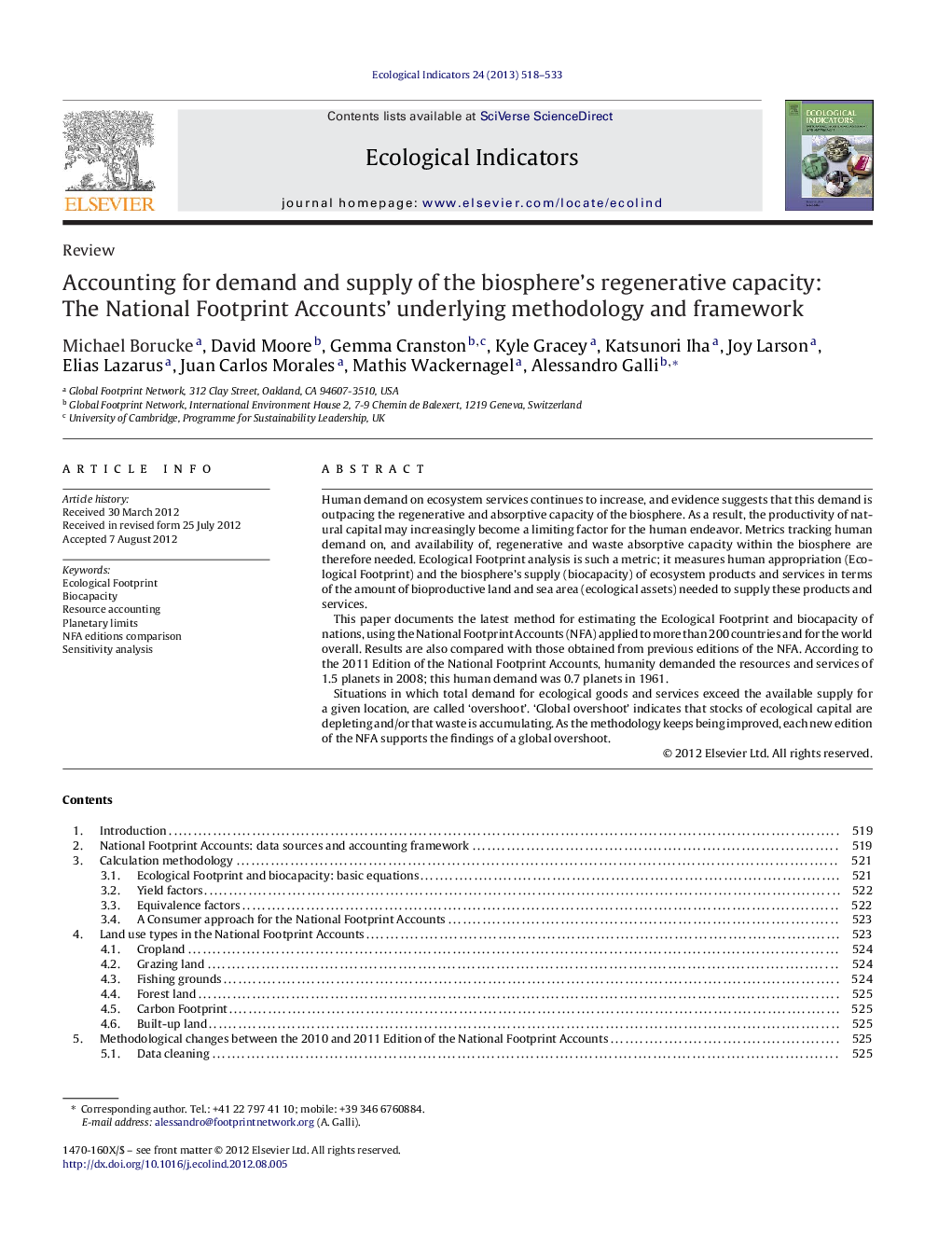| Article ID | Journal | Published Year | Pages | File Type |
|---|---|---|---|---|
| 4373672 | Ecological Indicators | 2013 | 16 Pages |
Human demand on ecosystem services continues to increase, and evidence suggests that this demand is outpacing the regenerative and absorptive capacity of the biosphere. As a result, the productivity of natural capital may increasingly become a limiting factor for the human endeavor. Metrics tracking human demand on, and availability of, regenerative and waste absorptive capacity within the biosphere are therefore needed. Ecological Footprint analysis is such a metric; it measures human appropriation (Ecological Footprint) and the biosphere's supply (biocapacity) of ecosystem products and services in terms of the amount of bioproductive land and sea area (ecological assets) needed to supply these products and services.This paper documents the latest method for estimating the Ecological Footprint and biocapacity of nations, using the National Footprint Accounts (NFA) applied to more than 200 countries and for the world overall. Results are also compared with those obtained from previous editions of the NFA. According to the 2011 Edition of the National Footprint Accounts, humanity demanded the resources and services of 1.5 planets in 2008; this human demand was 0.7 planets in 1961.Situations in which total demand for ecological goods and services exceed the available supply for a given location, are called ‘overshoot’. ‘Global overshoot’ indicates that stocks of ecological capital are depleting and/or that waste is accumulating. As the methodology keeps being improved, each new edition of the NFA supports the findings of a global overshoot.
► Human demand on the biosphere is outpacing its regenerative and absorptive capacity. ► The Ecological Footprint is a tool to track demand and availability of the biosphere's regenerative capacity. ► This paper describes the methodology for calculating Ecological Footprint and biocapacity for 200 countries and the world. ► Globally, humanity demanded the resources and services of 1.5 planets in 2008.
